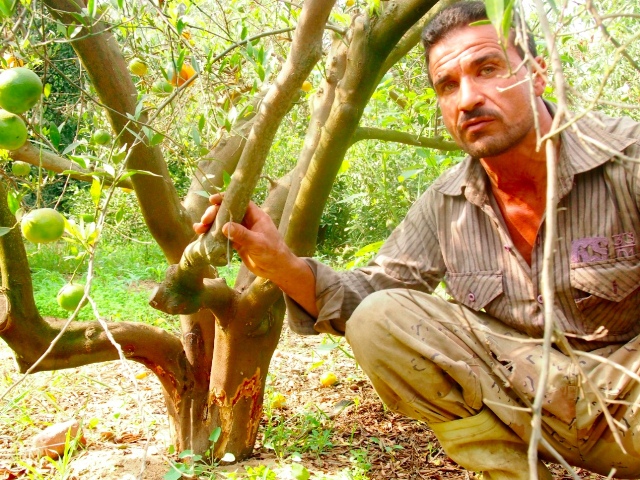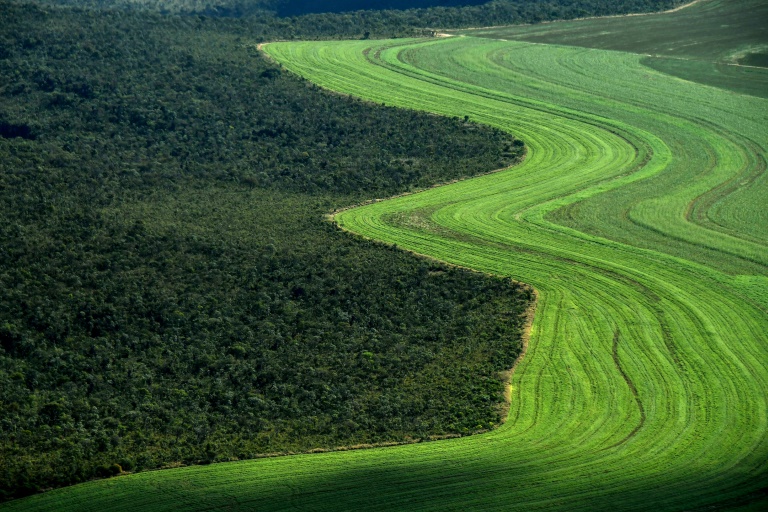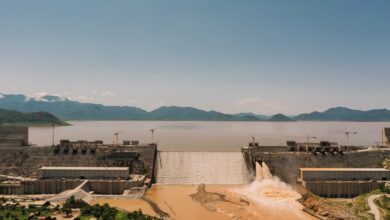
The dirt road leading into Abu Ghaleb is lined with green oranges, prickly pear blooms, mango trees, vineyards and date palms. Only small houses built on the farmland interrupt the beautiful landscape. The same dirt road winding through crops also eventually gives way to an unexpected sight: massive cranes, large trucks and the skeletons of buildings.
The farming village of Abu Ghaleb is the chosen site for the North Giza Power Plant, a large power station being built on 73 feddans of purchased agricultural land.
Funded in part by the World Bank and the European Investment Bank, the project is being planned and implemented by the Egyptian Electricity Holding Company (EEHC), which has “an objective to provide a secure, reliable electricity generation and distribution system for Egypt,” according to the project’s Environmental Impact Assessment (EIA) report.
However, local farmers, who have spurned the project since it began, are now starting to realize the extent that the construction will damage their livelihood.
The farmers’ goal is clear: to stop the damage caused by building the power plant. “We know the plant will persist, we want to know how to avoid future damage and find a way for people and local NGOs to monitor the company,” said Abdelmawla Ismail, chairman of the Egyptian Association for Collective Rights, during a meeting with farmers, who agreed.
One of their greatest concerns is that the practices that should be put in place to mitigate and monitor potentially damaging procedures will not be handled correctly.
“This could have been done properly from the beginning,” says Saeed al-Masry Mohammed, a farmer whose land falls within the power plant’s area of impact, referring to the mitigation of potential negative effects on the surrounding land and inhabitants thoroughly evaluated in the EIA.
Environmental Protection Law 4/1994 (amended in 2009) requires any project likely to have a significant impact on the environment to complete an EIA. Since the project is partly financed by the World Bank, it had to meet additional standards, which included the preparation of a Resettlement Policies Framework (RPF), for impact assessment and mitigation.
Provisions were discussed in the EIA and RPF to sufficiently reimburse the farmers for lost crops and adversely affected land. According to Ismail, who is working closely with the village, these are just “words on paper.”
Ayman Ramadan, water resources advisor for the Ministry of Water Resources and Irrigation, explained that “studies show that the agricultural sector is one of the lowest profit-making sectors.” In comparison to the economic benefits that the North Giza Power Plant will produce, the Abu Ghaleb farmers fear they are too small-scale to matter.
Each young farmer owns anywhere from 1 to 3 feddans of land. Ismail contends that the North Giza Power Plant is exceeding projections for negative impact on farmers’ livelihoods while failing to meet reconciliation or mitigation standards.
Because these farmers are so small-scale, even minor losses are hard blows. “If the farmer’s debt is increased … they may consider planting different crops, evacuating, or working in other sectors,” says Ramadan.
“We owe money to the bank and we can’t pay it back,” Waheed Sabu lamented.
Farmers were told that there would be no additional land use outside of the 73 original feddans, despite provisions in the EIA that allow for transmission towers to be built off-site. Farmers like Amad Hilmy Mahmoud, who own land on which the EEHC wants to build these towers, were presented with contracts and promised that their land would be temporarily unavailable during tower construction, but that afterwards they could resume farming.
“Some of the farmers are illiterate and fingerprint the contract,” Ismail says, implying they are not made fully aware of the provisions. They found that when their land was returned to them, it came with new restrictions on what could be planted in the tower’s vicinity.
Mahmoud, whose entire plot of 2.5 feddans would be used by the towers, didn’t sign his contract. “You can’t farm under the towers,” he says. “When I refused to sign, the police came after me.”
The most pressing fears, however, concern water use both during construction and future normal plant operations. Groundwater depletion, soil contamination and the disposal of polluted water in the Nile are all risk factors that, if not resolved, may detract from the farming economy of Abu Ghaleb.
Ramadan explains, “If there is no drain from the excess water used in cement infrastructure, it may be disposed of in the soil and infiltrate it, contaminating the groundwater within.” The farmers point out tracks of excess water from the construction site draining through their crops; the stream runs within inches of orange trees.
The EIA says that no groundwater will be used during construction, but farmers, including Mohammed, have found that their wells dried up. Mohammed Abdel Aziz al-Bahai, executive director of the Egyptian Center for Civil and Legislative Reform, explains that although they are not using groundwater as an input for construction activities, “they dug into the land to remove the ground water” to prepare the site for construction.
Although this measure may be temporary, and reimbursement measures to build more — or deeper — wells for affected farmers are in progress, the farmers say it is not enough to prevent their crops from failing. Farmers must either pump from deeper water reserves, which is not always possible and raises complaints about water quality, or watch their wells go dry.
In the end, Ramadan says, farmers will fall further into debt as they pay more for the same amount of water. Ismail explains that the farmers, due to depleted groundwater resources they once used to irrigate their crops, have resorted to re-using irrigation waste to water their land. “It destroys the soil,” he added.
Most visibly, there is no buffer zone between the power plant site and adjacent agricultural land. The trees lining the barbed wire fence are coated with cement dust, which deprives the leaves of oxygen and invites pests such as spiders and elephant shrews. “You can see the cement on the trees up to one kilometer away,” Mohammed says.
“The residents have complained,” explains Bahai. “The plant gave the majority of affected people about $500, but that is, of course, very little considering everything that is being taken from them.”
Concerns relating to the construction phase may be short-term, but the plant’s operation raises farmers’ fears about surface water quality and the consequent effect on their drinking water, crop irrigation and overall health of their farming economy.
A large source of farmers’ worries is the power plant’s future usage of surface water from al-Rayyah al-Baheiry, the branch of the Nile closest to the village. The waters pass through and thus cool down operative equipment. It is feared the water temperature will be increased after [the cooling process] and will pollute the water system upon discharge, while pollutants coating the plant’s machinery will harm water quality.
While there may be water treatment facilities, the farming and activist community does not believe there will be enough active oversight and evaluation to prevent waste mismanagement. “Most probably, they will dispose of everything in the Nile,” sighs Ismail. Many worry that the power plant’s self-monitoring system will fail and basic water amenities will be at risk.
The EIA outlines an “open door” policy to allow stakeholders to voice any ongoing concerns, yet, while complaints have been filed and fact-finding missions are allegedly underway, the farmers fear their voices will not be heard before the damage is already done.
The damage to crop yields is already being felt, as some farmers report almost 50 percent losses. “This tree used to produce 200 kilograms of oranges,” Mohammed says, cradling the few left on the tree’s branches.
“This is all because it will be ‘good for Egypt,’” Bahai muses.
“We can’t call this a ‘National Project’ because a national project makes peoples’ lives better, decreases unemployment, and doesn’t cause harm to the environment,” Ismail stresses.
The villagers in Abu Ghaleb know the project will continue but they hope to lessen the damage to their livelihoods through honest management practices and fulfilled damage-mitigation promises. Their determination to be heard is symbolic of a larger movement for the better representation of similarly affected and often voiceless people faced with large development projects. “This is not about us,” Ismail says. “This is not about Egypt. This is about the entire third world.”
This piece appears in Egypt Independent's weekly print edition.



